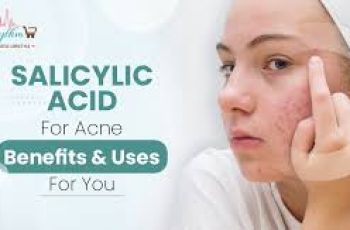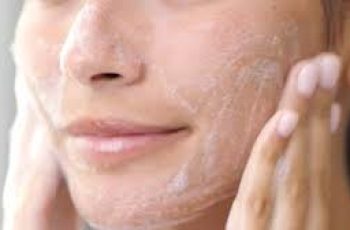Introducing Our Intensive Skin Defence Balm- The Winter Skin Saviour
Winter is here which means festive cosy nights in, mulled wine and perhaps too many mince pies, but what also comes with that are sore, cracked lips, dry hands and eczema flare-ups!
This is why I wanted to share with you today some more information about our latest launch here at Procoal, the Intensive Skin Defence Balm. This balm has been formulated for very dry skin and those prone to eczema, but there is more to this multitasking balm than meets the eye. Let me show you what this wonder product can do for you and your skin this winter.
Why is this balm good for the skin?
This balm has been formulated with the idea of helping people suffering from very dry skin and who are also prone to eczema.
The winter months are especially tough for those with dry, eczema-prone skin. With freezing temperatures and weather and central heating causing the skin to feel tight, dry, cracked and sore with eczema flare-ups causing a huge amount of discomfort.
With an enriched blend of natural oils and vegan ingredients, this balm will calm any inflammation and redness, restoring the balance to the skin’s barrier. Dry, flaking patches will be hydrated leaving your skin feeling soft and glowing! This is not the only use for this balm, as described it’s a multipurpose balm with several skin concerns it can tackle with ease, I will share with you in more detail these below. First of all, I wanted to dive into the ingredients list, also known as the inky list, to explain the reasons these oils have been selected to create this skin saviour!
Enriched in Natural Oils
The intensive skin defence contains many natural oils, all enriched with various skin benefiting properties.
Olea Europaea (Olive Oil) Harvested from the top-quality olives that are naturally enriched in vitamin A and E with powerful hydroxytyrosol, which is an anti-inflammatory and free-radical fighting ingredient helping to calm and restore the skin’s barrier to optimum health. The oil penetrates the skin easily and leaves it feeling super soft.
Carthamus Tinctorius (Safflower Oil) Removes any dirt and oil that can lead to the skin becoming dry and rough to the touch and any skin concerns such as eczema, psoriasis and spots. Its hydrating benefits allow the skin to retain moisture and appear plumped and glowing with wrinkles reduced and added bounce back to the skin.
Cannabis Sativa Seed (Hemp Oil) Is harvested from the hemp seed, which is cold-pressed and comes as a green oil that contains a multitude of skin benefits whether applied topically or ingested. Rich in omega 3 fatty acids, hemp oil works as a strong anti-inflammatory and encourages skin growth and cell turn over without clogging the pores and balancing out the skin’s natural oil production.
Euphorbia Cerifera (Candelilla Wax) Apart from this wax being the ingredient that allows the balm to be 100% vegan due to the fact we won’t need to use beeswax. It’s also a fast-absorbing lubricant and nourishing skin conditioner which helps to reduce the signs of stretch marks, age spots and wrinkles.
Calophyllum Inophyllum (Tamanu Oil) There isn’t anything this oil doesn’t help with, to be honest. From wrinkles, breakouts, eczema, fungal infections, cellulite, the list is endless. With a rich blend of healing and nourishing active properties harvested from the nut of Tamanu plant this oil is considered one of the best in the world for using on your skin, yet has remained remarkably unknown.
There are also a number of other ingredients in this powerful blend, all formulated for this balm to be powerful but not harsh as the defence balm can be used on babies as young as six weeks old!
More uses for the Intensive Skin Defence Balm
As I have shared the natural oils that are included into the balm, you may have a better understanding of what the balm can do for you and any skin concerns you have, here are some examples of the uses of the balm.
Dry skin
Eczema flares up
Lip balm
Nappy rash
Dry cuticles
Brow tamer
Frizzy hair tamer
Stretch marks
Sunburn
Breakouts
This is the tip of the ice burg when it comes to the benefits of this balm and it’s multi-tasking talents!
How to store the Intensive Skin Defence Balm
It’s best to keep your balm in a cool, dark space. It’s perfectly happy to nestle in amongst your other products in your drawers! The wax for the balm as mentioned earlier is the candelilla wax, this not only makes the formula vegan, it also has a better melting temperature than beeswax. This won’t necessarily mean you can leave the pot out in the sun, but with central heating being firmly switched on will ensure your balm is pliable and still deliver the best results for your skin.
If all of this is sounding too good to be true, then take a closer look at the balm on our website, The Intensive Skin Defence Balm
Much like the other products in our collection quality is very important to us, this product allow demonstrates our dedication to this! But don’t just take our word for it, have a closer look on our website for more information and perhaps some last-minute Christmas wish list, your skin will thank you for it.
DQH Knowledge drop: In your 20s, your skin cell turnover decreases. (Cell turnover is a key component in keeping your skin youthful.) You know what else slows down? Your collagen production. Starting in your 20s, collagen decreases by about 1 percent per year. Should you want to prevent fine lines and wrinkles, start by eliminating behaviors that contribute to premature aging. “If it’s bad for you, it’s bad for your skin,” says dermatologist Michel Somenek.
“Cigarette smoking reduces blood flow to the skin and causes premature wrinkling and a dull skin texture. Making the repeated pursed motion to inhale can also cause smoker’s lines. Alcohol and recreational drugs are toxins for the skin that damage its cellular structure and DNA,” Somenek tells us. “The faster you eliminate vices while you are young, the better chance your skin and body have to recuperate.” Also, adopting an anti-aging routine in your 20s is key. After all, the best offense is a good defense. We spoke to Somenek and experts Joshua Ross and Audrey Kunin to find out more.
Keep reading for the best anti-aging products for your 20s, according to skincare professionals.
Sunscreen
“We all know that the sun is the number one cause of skin aging and starting the prevention in your 20s is very important,” Ross says. “The majority of your sun damage won’t start to appear until you’re in your 30s, so don’t wait until you see it surface or you’ll be behind the curve. Stay ahead of it with a good-quality zinc-based sunscreen worn daily.”
Farmacy Green Defense Daily Mineral Sunscreen
An invisible sunscreen with SPF 30, plus botanical extracts meant to protect skin with tons of antioxidants. Bonus: It’s clean and fine to use under makeup.
Bareminerals Complexion Rescue™ Tinted Moisturizer Broad Spectrum SPF 30
Although we recommend you use your SPF and moisturizer separately, we also understand moments when you don’t have time or energy for that extra step. For those times, this bareMinerals moisturizer is a great thing to have on hand.
Vitamin C Serum
“A great introduction to anti-aging is to start with a vitamin C serum in your morning skincare routine,” Ross says. “It’s a powerful antioxidant that will neutralize free radicals and brighten the skin.” He adds that it’s a great way to counteract the effects of the sun’s harmful rays, which, as previously mentioned, are among the biggest causes of premature aging.
Drunk Elephant C-Firma™ Vitamin C Day Serum
The Drunk Elephant C-Firma is a lightweight serum that promises to give skin a glow by combining the brightening powers of vitamin C with ferulic acid, l-ascorbic acid, and vitamin E. The included sodium hyaluronate is meant to replace hydration loss, so you shouldn’t have to deal with any irritation.
Sunday Riley C.E.O. Rapid Flash Brightening Serum
This potent serum is jam-packed with vitamin C (15 percent, to be exact), which means it’s a potential superstar at both brightening skin and dousing it in antioxidants.
Peptides
Using peptides on your skin has many benefits, says Somenek. “The skin barrier is what defends the body against pollution, UV rays, bacteria, and toxins. It can be damaged by several everyday factors. Using topical peptides aids in building a stronger barrier,” he says. “Peptides comprise elastic fibers, which are a type of protein. These fibers help to make skin appear taut and firm. Peptides can also help repair damaged skin, relieve inflammation, and even out skin tone. Some peptides can kill acne-causing bacteria that is common in 20-somethings.”
Kunin agrees, saying, “Peptides are an excellent entry point for supporting collagen.” She recommends looking for face and eye treatments that contain these collagen-boosting powerhouses.
Charlotte Tilbury Magic Eye Rescue Cream
This Charlotte Tilbury super-emollient eye cream has a base of coconut oil and shea butter (read: it’s incredibly hydrating). Botanicals plus peptides are meant to help reduce dark circles and boost collagen, respectively.
This creamy moisturizer serves up potent collagen-boosting peptides and pycnogenol, and antioxidant-rich vitamin C. “Instead of sitting on top of the skin, peptides penetrate the outer layer so they go deep. The ‘signals’ they send tell the cells to produce elastin and collagen, which are needed for youthful-looking skin,” explains Somenek.
At-Home Peel Pads
Remember that skin cell turnover fiasco we talked about earlier? One way to help support it is by exfoliating. “Exfoliation is important to help keep skin fresh and luminous,” Kunin says. She recommends using at-home peel pads as an easy and effective way to exfoliate.
“The goal in your 20s is to fight the slowing pace of cell turnover. It is wise to use products that gently exfoliate, yet still remove oil and other impurities. Products that have Alpha Hydroxy Acids (AHA) or Beta Hydroxy Acids (BHA) are a good choice.”
According to Somenek, you should only exfoliate two to three times a week. “People of all ages are guilty of over-exfoliating and that can be too much of a good thing,” he says.
Dermadoctor Kakadu C Intensive Vitamin C Peel Pad
A few swipes of this Derma Doctor powerful peel pad promise to leave your skin glowing and smooth, thanks to the seven (yes, seven) types of chemical exfoliants, including AHA and BHA. It also contains vitamin C via Kakadu plum extract for added brightening and antioxidant protection.
KEY INGREDIENTS Kakadu plum extract is sourced from the Kakadu plum, a fruit grown in northern Australia. It contains vitamin C, which restores the skin’s natural barrier, increases collagen production, and soothes irritation.
Dr. Dennis Gross Skincare Alpha Beta® Universal Daily Peel Pads
These are the gold standard of peel pads, with a cult following and over 900 five-star reviews on Sephora. They’re easy to use and contain a blend of anti-aging exfoliating acids.
Emollient Night Cream
“In your 20s, you need to start upping the hydration in your skincare routine. You may have been cautious of over-moisturizing because of acne in your teens, but as you enter your 20s, your skin transitions and becomes drier,” Ross says. “I recommend an emollient night cream added into your evening skincare regimen.”
“Twenty-somethings need to make sure that they are not using creams that will clog their pores and cause excess oil production,” says Somenek. Opt for non-comedogenic products.
Cerave Skin Renewing Night Cream
One great choice is the CeraVe Skin Renewing Night Cream, which is a non-comedogenic night cream that leaves skin soft and glowy. It combines the moisturizing powers of ceramides and hyaluronic acid.
RoC Retinol Correxion Max Hydration Creme
“The best night cream ingredients contain retinol, benzoyl peroxide, and/or salicylic acid or hyaluronic acid. The goal is to moisturize, yet remove excess oil,” says Somenek. This Roc Retinol Correxion cream fits the bill as it contains both hyaluronic acid and retinol so it promises to moisturize while also being non-comedogenic.



